#Importance of Web UI Development
Explore tagged Tumblr posts
Text
Designing Beyond Aesthetics: The Importance of User-Centered UI/UX

Welcome to a world where design goes beyond just looking pretty. In an era dominated by technology, user-centered UI/UX holds the key to unlocking a seamless and immersive experience for every digital interaction. Gone are the days when aesthetics alone could captivate users; now, it’s all about understanding their needs and crafting interfaces that effortlessly cater to them.
Join us on this enlightening journey as we delve into the importance of designing with users at the forefront – get ready to witness how thoughtful design can transform mere interactions into unforgettable experiences.
Introduction to UI/UX Design
User experience (UX) and user interface (UI) design are important considerations for any product, but they are especially critical for web and mobile applications. A good UX can make the difference between a successful app and one that fails to attract users. Likewise, a well-designed UI can improve the usability of an app and make it more enjoyable to use.
When designing an app, it is important to keep the user in mind at all times. The goal should be to create an app that is easy to use and provides a great user experience. To do this, designers need to think about how users will interact with the app and what their needs are. They also need to consider how the UI will look and feel.
Aesthetics are important, but they should not be the only focus when designing an app. By keeping the user in mind, designers can create apps that are not only visually appealing but also easy to use and enjoyable to interact with.
User-Centered Design Principles
Designing a UI/UX that is both aesthetically pleasing and user-friendly can be a challenge. It is important to keep in mind, however, that the most important aspect of any design is how well it meets the needs of the users. With that in mind, here are some user-centered design principles to keep in mind when designing your next UI/UX:
Keep the user in mind at all times – The most important thing to remember when designing a UI/UX is that it must be designed with the user in mind. Everything from the layout to the color scheme should be chosen with the user’s needs and preferences in mind.
Make it easy to use – A good UI/UX will be intuitive and easy to use. Users should be able to navigate through your design easily and find what they are looking for without difficulty.
Keep it consistent – Consistency is key when it comes to design. Inconsistent elements can confuse users and make your design look sloppy. Stick to a consistent layout, color scheme, and typography throughout your design for a polished look.
Test, test, test! – Always test your design with real users before launch. This will help you identify any areas that need improvement and make sure that your final product is as user-friendly as possible.
Make it accessible – Accessibility is an important part of any design. Make sure your UI/UX is accessible to users who may have disabilities or other impairments. This can be done by making sure that all elements are easily scannable and that the colors used are high contrast for maximum visibility.
The Role of Aesthetics and Visuals in UI/UX Design
Aesthetics and visuals are important elements in UI/UX design, but they are not the only elements. User-centered design focuses on the needs of the user first and foremost. This means that designers must take into account the user’s goals, tasks, and workflow when designing the interface.
Aesthetics are important because they can influence the user’s first impression of the interface. The visuals must be pleasing to the eye and help guide the user’s attention to the most important elements on the screen. But ultimately, it is more important that the interface is easy to use and helps the user accomplish their goals.
Designers must strike a balance between form and function when creating an effective UI/UX design. A beautiful interface that is difficult to use will frustrate users and ultimately fail. On the other hand, an ugly interface that is easy to use can be successful if it meets the needs of its users.
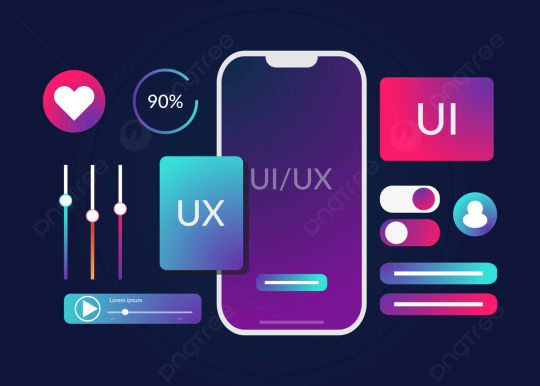
Techniques for Usability Testing
User-centered design is a process that helps ensure that the products we design meet the needs of the people who will use them. One important part of user-centered design is usability testing, which helps us understand how people interact with our designs and identify areas for improvement.
There are many different techniques that can be used for usability testing. Some common methods include:
Task-based usability testing: In this type of test, participants are asked to complete specific tasks using the product under test. This allows us to see how well users are able to accomplish their goals and identify any areas of confusion or difficulty.
2. Eyetracking: Eyetracking involves using special equipment to track where users look while they are using a product. This can help us understand what parts of the design are attracting attention and identify areas that may need further refinement.
Clickstream analysis: Clickstream analysis involves tracking the sequence of clicks made by users as they navigate through a product. This can help us understand how users interact with the design and identify areas where they may get lost or confused.
Survey research: Survey research involves asking users questions about their experience with a product. This can be done either before or after using the product, and it can help us gather valuable feedback about what works well and what could be improved .
Interviews: Interviews provide a more in-depth look into users’ experiences with a product and can help us understand underlying motivations and behaviors.
Focus groups: Focus groups involve bringing a group of people together to discuss their experiences with a product in an open and interactive environment. This can be useful for gathering feedback on large designs or complex products.
Prototype testing: Prototype testing involves having users interact with early versions of a product before it is released, allowing designers to quickly identify areas that need refinement before launch.
Accessibility and Responsive Design Considerations
When it comes to user-centered UI/UX design, accessibility and responsive design considerations are extremely important. After all, if your site or app isn’t accessible to users with disabilities, or doesn’t look good on different screen sizes, you’re not going to meet their needs.
Here are some key things to keep in mind when designing for accessibility and responsiveness:
• Use clear and concise text that can be easily read by everyone, regardless of their disability.
• Make sure your site can be navigated using a keyboard or other assistive technology.
• Design your site so that it looks good on all screen sizes, from mobile devices to desktop computers.
• Pay attention to color contrasts and make sure your text is visible against any background color.
By keeping these considerations in mind, you can ensure that your UI/UX designs are truly user-centered and meet the needs of all your users.
Tips for Creating Intuitive Experiences with UI/UX Design
As a UI/UX designer, it is important to create intuitive experiences for users. Here are some tips to help you achieve this:
1. Keep the user in mind at all times – When designing your UI/UX, always keep the user in mind. What do they need? What do they want? How can you make their experience as smooth and enjoyable as possible?
Use familiar design patterns – Don’t try to reinvent the wheel when it comes to design patterns. Instead, use familiar patterns that users will be able to understand and navigate easily.
Make use of negative space – Use negative space in your designs to help guide the user’s eye and create a more intuitive experience.
Use color carefully – Color can be a powerful tool in user-centered UI/UX design, but it should be used carefully so as not to overwhelm users or create confusion.
Use fonts judiciously – As with color, fonts should be used judiciously in order to create an easy-to-read and intuitive experience for users.
Conclusion
To sum up, user-centered UI/UX design is an essential part of any digital product development process. It helps ensure that users have positive experiences when interacting with a website or app and it can help increase customer loyalty and satisfaction. By putting the user at the center of your design decisions, you will be able to create products that look great but also offer useful functionality. As designers, we should never forget our ultimate goal: creating exceptional experiences for all users!
#Designing Beyond Aesthetics: The Importance of User-Centered UI/UX#web design#web devlopment#app development#web development#webdevelopment#app devlopment#digital marketing#software devlopment company#graphic design
0 notes
Text
Benefits of implementing UI and UX design
UI/UX design is an essential part of your website. Enhancing this aspect of your site enables you to attract more prospects, increase conversions, sales, and overall profitability, and improve customer retention. Brand loyalty: Using the right UI/UX design can enhance customers' satisfaction.
Brand loyalty: Using the right UI/UX design can enhance customers’ satisfaction. When customers are satisfied, you can retain them, and that’s the secret for building brand loyalty.
Consistency: Being consistent with your brand/products and offering excellent user experiences is key to a profitable business. If you aren’t an expert graphic designer and need a little help with this, many of these logo makers can make your branding easier.
Customer satisfaction: An outstanding UI/UX design should be interactive and navigable engaging content that makes people stay longer on your site.
What Are the Benefits of UI/UX Design for Small Businesses?
1. Retain Users for a Long Time
2. Boosts Branding
3. Attracts New Customers on the Platform
4. Increases Productivity
5. Increases Conversion Rates of Your Platform
6. Helps in Search Engine Optimization
7. Reduces Costs
8. Best Experience for All Devices
9. Improved Website Speed
10. Interaction Acknowledgment
11. Improves Customer Satisfaction
Web application development is the creation of application programs that reside on remote servers and are delivered to the user's device over the Internet. A web application (web app) does not need to be downloaded and is instead accessed through a network.
Explore the range of original solutions we offer~ • UI/UX DESIGN • WEB DEVELOPMENT • APP DEVELOPMENT • INFOGRAPHICS • LOGO DESIGN Visit here: https://www.transcurators.com/design-service ~ Thank you .
#web development services#UI and UX design importance#why ui and ux is important for website growth#what is ui and ux#web development#website design
0 notes
Text
In regards to the new desktop layout just as a follow-up to the initial shock to expand on some of my points/reactions:
obviously your mileage is gonna vary in regards to how it fits on your screen, depending on your use case, window size/position, and the resolution of your monitor. i have a 4K monitor with decently small text scaling so i'm able to fit a lot of stuff on my screen on most sites save for like Twitter and now Tumblr, because a lot of sites at least scale somewhat alright even if they don't make the most use of the screen space. i assume this is a case of this update being SUPER half baked and not thoroughly developed before rollout. i mean look at how many UI redundancies it introduces to the account page. this is... not a finished product! at least i sure hope it wouldn't be!!!
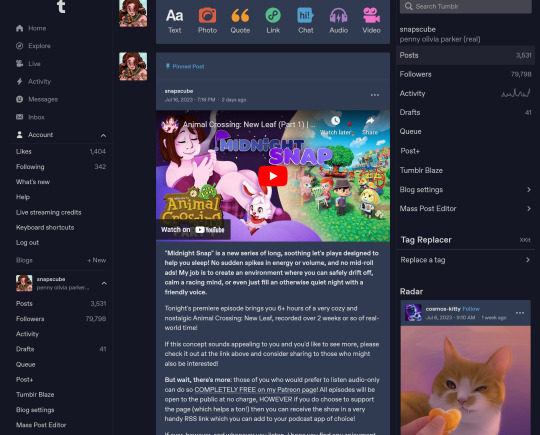
so that to say: i've seen some people post images of the new update where it looks like, mostly okay in terms of space efficiency. the issue of wasted space then is not necessarily an issue of the layout itself, but more a disregard for how it should scale properly to different resolutions. which is super super important to figure out especially nowadays as there is a LARGE variety of screen resolutions out there in regular rotation.
also ultimately my take from the perspective of a web designer is...... not to be trusted, as I am not a web designer LOL. i am an entertainer and i use this site primarily as a consumer. but like.... sincerely, the old UI was not perfect but this is not addressing any of that. it's just a distraction and a seemingly clear attempt to copy the UI design of Twitter as that platform continues to push its userbase away. which is a really weird choice!!! because these websites are not good at the same things! and tumblr sincerely needs to stop trying to make them good at the same things! that's not why i'm here!
546 notes
·
View notes
Text

The more persistent control you have over a device, the more you and the device adapt to each other, becoming a more effective group organism. The higher the input and output bandwidth of the interface (i.e., the greater the number of distinct ways you can interact with it / it can respond to you), the faster the system can adapt.
So, the horse metaphor makes perfect sense: your desktop ships with a real keyboard on which you can probably do 300 WPM without blocking part of the display, and has a display that can hold half a dozen legible non-overlapping windows. If you have a screwdriver, you can open it up and replace basically any part. Even without a screwdriver, you can generally out of the box persistently dramatically change the UI settings to fit the needs of your environment (light vs dark mode, font size and style). You can stick linux on & that opens up a lot more. On a desktop computer, it's possible for a motivated 10 year old of average intelligence to progress from normal computer use to writing non-trivial application software for their own use within a couple years -- I am proof, & I'm far from alone.
Tablets are on the opposite end of the spectrum: simplified, locked down. The user does not collaborate with the tablet; instead, the tablet has only those affordances that channel the user's behavior into habits the developers of the tablet software consider desirable.
Mobile & web achieved the dream of proprietary software people: user-facing software that the user can't even disassemble because the important parts aren't accessible; since they did this through physical distance rather than the legal system, they can profit from other people's open source software too, circumventing many of the restrictions intended to keep improvements folded back into the community or to limit commercial use. But the side effect of this is that it gives professional computer touchers much more control over regular people's computers: not only can you not fix bugs in someone else's web app yourself, but you can't refuse to upgrade to a version that's a worse fit for your purposes. Where desktop computing encouraged the development of communities of amateur computer hobbyists who, together, would adapt or create alternatives to things that didn't work right (as well as creating lots of interesting, funny, unnecessary stuff that can only be classified as Art -- little games and toys, elaborate shitposts, weird mods and skins), mobile does not. The only thing you need to make your desktop computer do something brand new is a desktop computer, the software development tools & documentation that ship with the OS, and some free time -- you don't even need an internet connection; developing for web or mobile also functionally requires a desktop, on top of your mobile device for mobile (and if it's an iPhone you gotta have a Mac & pay Apple $99/year), & for web you need to pay for hosting and a domain name.
12 notes
·
View notes
Text
Mini React.js Tips #3 | Resources ✨
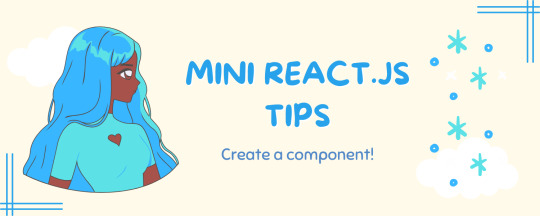
Continuing the #mini react tips series, its components making time~!
In React, a component is like a Lego brick for building websites or apps. It's a small, independent part of the user interface (UI) that you can reuse whenever you need it. These components can be combined to create bigger and more complex applications. Examples are the header, footer, cards, asides, etc!
What you'll need:
know how to create a React project >> click
know the default React project's file structure >> click
know basic HTML
know basic JavaScript
basic knowledge of using the Terminal

What We Are Creating:
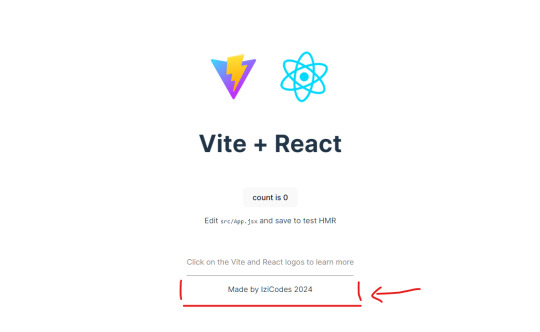
The footer at the bottom!

[ 1 ] Navigate to the 'src' Folder: Open your project in Visual Studio Code, locate the 'src' folder, and right-click on it.
[ 2 ] Create a New File: Click 'New File' to create the file within the 'src' folder. This file will house the code for your React component.
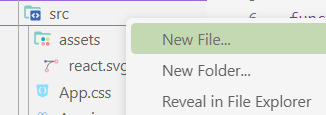
[ 3 ] Naming Conventions: Give your component a name, according to the convention of starting with a capital letter. This naming convention is essential for React to recognize your component~!!
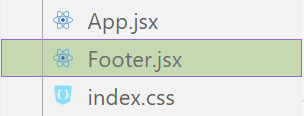
[ 4 ] Create The Initial Function: Open the file and type:
export default function [name of component]() {}

[ 5 ] Insert The return() Statement: The statement is used within a component to specify what content should be rendered when the component is invoked or used. Type:
return()

*the error is there because we haven't added anything inside yet, don't worry!
[ 6 ] Insert The Empty Tags: Inside of the return(), add empty tags (tags that don't have a specified element inside of them).
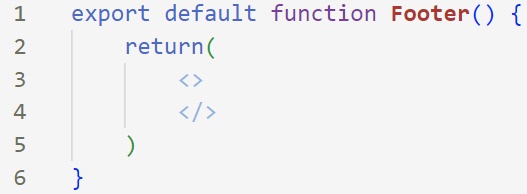
[ 7 ] Time For Some HTML: Inside the empty tags, enter the normal HTML elements that you want~!
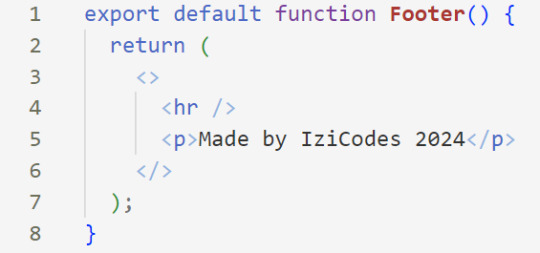
[ 8 ] Integration with App.jsx: Navigate to the 'App.jsx' file in the project, which is typically the entry point of your React application. At the top, import your newly created component. Type:
import [name of component] from './[location of the component]'

[ 9 ] Use Your Component: Inside the return() statement of the 'App()' function, include your component using the following syntax:
<[name of your component] />
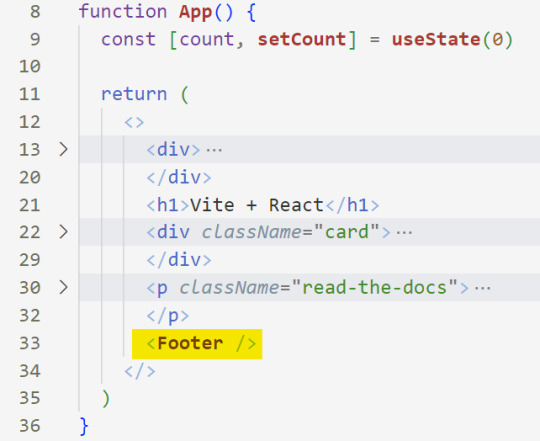
[ 10 ] Run the Development Server: Start your development server with the command (the 'Local' link):
npm run dev
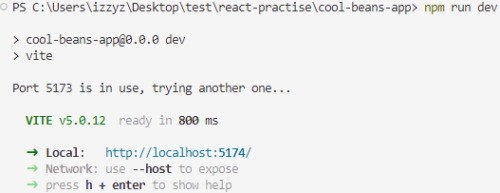
[ 11 ] Preview Your Project: Open the link provided in your terminal in your web browser. Witness your component in action!


Congratulations! You made your first component! Try and create some new ones and place them around in the App()~!
BroCode’s 'React Full Course for Free’ 2024 >> click
React Official Website >> click
W3School's React Components >> click
Importing and Exporting Components >> click
🐬Previous Tip: Tip #2 The anatomy of the default React project >> click
Stay tuned for the other posts I will make on this series #mini react tips~!
#mini react tips#my resources#resources#codeblr#coding#progblr#programming#studyblr#studying#javascript#react.js#reactjs#coding tips#coding resources
33 notes
·
View notes
Text
What is Mern stack And Its importance? Before that I will Tell you the best institute for Mern stack course in Chandigarh.

What is Mern stack?
MERN Stack is a popular JavaScript-based technology stack used for building full-stack web applications. It consists of four key technologies:
MongoDB: A NoSQL database that stores data in a flexible, JSON-like format.
Express.js: A lightweight and fast backend framework for Node.js.
React.js: A front-end JavaScript library for building user interfaces.
Node.js: A runtime environment that allows JavaScript to run on the server side.
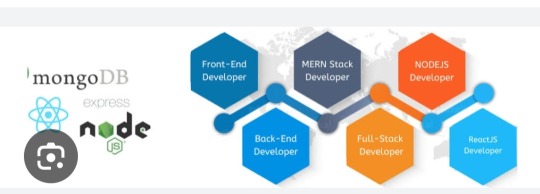
Importance of Mern Stack :
Full-Stack JavaScript – Uses JavaScript for frontend and backend, simplifying development.
High Performance – Node.js ensures fast, scalable applications.
Cost-Effective – Open-source, reducing development costs.
Rapid Development – React’s reusable components speed up UI building.
Flexibility – Suitable for web apps, SPAs, eCommerce, and real-time applications.
Scalability – MongoDB handles large data efficiently.
Strong Community Support – Large developer base ensures continuous updates and support.
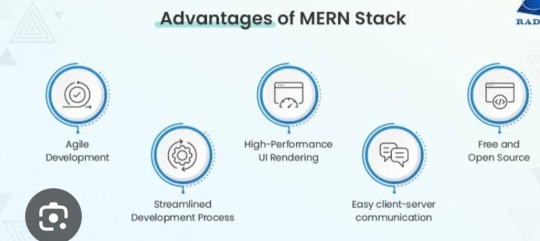
Now i will tell you the best institute for Mern stack course in Chandigarh .
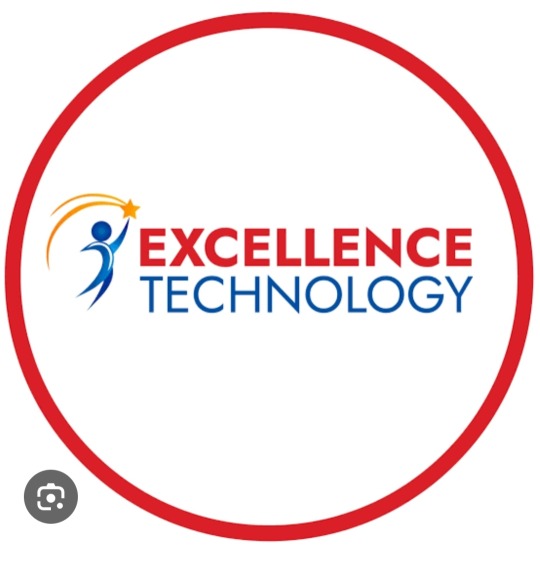
Excellence Technology is a leading EdTech (Educational technology) company dedicated to empowering individuals with cutting -edge IT skills and bridging the gap between education and industry demands. Specializing in IT training ,carrer development, and placement assistance ,the company equipts learners with the technical expertise and practical experience needed to thrive in today's competitive tech landscape. We provide IT courses like python ,Full stack Development, Web Design ,Graphic Design and Digital Marketing.
Contact Us for more details: 93177-88822
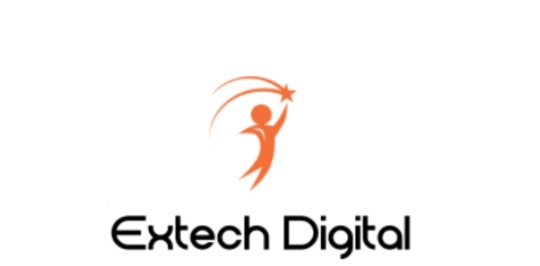
Extech Digital is a leading software development company dedicated to empowering individuals with cutting -edge IT skills and bridging the gap between education and industry demands. Specializing in IT training ,carrer development, and placement assistance ,the company equipt learners with the technical expertise and practical experience needed to thrive in today's competitive tech landscape. e provide IT courses like Python ,Full stack Development, Web Design ,Graphic Design and Digital Marketing.
Contact Us for more details: 93177-88822
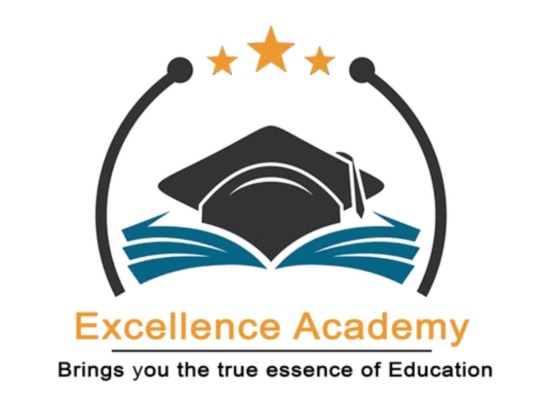
Excellence academy is a leading software development company dedicated to empowering individual with cutting edge IT skills and bridging the gap between education and industry demands.specializing in IT training, career development, and placement assistance, the company equits learners with the technical expertise and practical experience needed to thrive in today's landscape. We provide IT courses like python, full stack development,Web design, and Digital marketing.
Contact Us for more details: 93177-88822
About Author
Nikita Thakur
Mern stack AI Developer/ 2+ years of experience
Excellence technology
Professional summary
Nikita thakur is a skilled MERN Stack AI Developer with over 2 years of experience at Excellence Technology. Proficient in MongoDB, Express.js, React.js, and Node.js, she integrates AI solutions to build scalable, high-performance web applications. Nikita excels in developing innovative solutions, enhancing user experiences, and driving business growth through technology.
2 notes
·
View notes
Text
Which is better full stack development or testing?

Full Stack Development vs Software Testing: Which Career Path is Right for You?
In today’s rapidly evolving IT industry, choosing the right career path can be challenging. Two popular options are Full Stack Development and Software Testing. Both of these fields offer unique opportunities and cater to different skill sets, making it essential to assess which one aligns better with your interests, goals, and long-term career aspirations.
At FirstBit Solutions, we take pride in offering a premium quality of teaching, with expert-led courses designed to provide real-world skills. Our goal is to help you know, no matter which path you choose. Whether you’re interested in development or testing, our 100% unlimited placement call guarantee ensures ample job opportunities. In this answer, we’ll explore both career paths to help you make an informed decision.
Understanding Full Stack Development
What is Full Stack Development?
Full Stack Development involves working on both the front-end (client-side) and back-end (server-side) of web applications. Full stack developers handle everything from designing the user interface (UI) to managing databases and server logic. They are versatile professionals who can oversee a project from start to finish.
Key Skills Required for Full Stack Development
To become a full stack developer, you need a diverse set of skills, including:
Front-End Technologies: HTML, CSS, and JavaScript are the fundamental building blocks of web development. Additionally, proficiency in front-end frameworks like React, Angular, or Vue.js is crucial for creating dynamic and responsive web interfaces.
Back-End Technologies: Understanding back-end programming languages like Node.js, Python, Ruby, Java, or PHP is essential for server-side development. Additionally, knowledge of frameworks like Express.js, Django, or Spring can help streamline development processes.
Databases: Full stack developers must know how to work with both SQL (e.g., MySQL, PostgreSQL) and NoSQL (e.g., MongoDB) databases.
Version Control and Collaboration: Proficiency in tools like Git, GitHub, and agile methodologies is important for working in a collaborative environment.
Job Opportunities in Full Stack Development
Full stack developers are in high demand due to their versatility. Companies often prefer professionals who can handle both front-end and back-end tasks, making them valuable assets in any development team. Full stack developers can work in:
Web Development
Mobile App Development
Enterprise Solutions
Startup Ecosystems
The flexibility to work on multiple layers of development opens doors to various career opportunities. Moreover, the continuous rise of startups and digital transformation initiatives has further fueled the demand for full stack developers.
Benefits of Choosing Full Stack Development
High Demand: The need for full stack developers is constantly increasing across industries, making it a lucrative career choice.
Versatility: You can switch between front-end and back-end tasks, giving you a holistic understanding of how applications work.
Creativity: If you enjoy creating visually appealing interfaces while also solving complex back-end problems, full stack development allows you to engage both creative and logical thinking.
Salary: Full stack developers typically enjoy competitive salaries due to their wide skill set and ability to handle various tasks.
Understanding Software Testing
What is Software Testing?
Software Testing is the process of evaluating and verifying that a software product or application is free of defects, meets specified requirements, and functions as expected. Testers ensure the quality and reliability of software by conducting both manual and automated tests.
Key Skills Required for Software Testing
To succeed in software testing, you need to develop the following skills:
Manual Testing: Knowledge of testing techniques, understanding different testing types (unit, integration, system, UAT, etc.), and the ability to write test cases are fundamental for manual testing.
Automated Testing: Proficiency in tools like Selenium, JUnit, TestNG, or Cucumber is essential for automating repetitive test scenarios and improving efficiency.
Attention to Detail: Testers must have a keen eye for identifying potential issues, bugs, and vulnerabilities in software systems.
Scripting Knowledge: Basic programming skills in languages like Java, Python, or JavaScript are necessary to write and maintain test scripts for automated testing.
Job Opportunities in Software Testing
As the demand for high-quality software increases, so does the need for skilled software testers. Companies are investing heavily in testing to ensure that their products perform optimally in the competitive market. Software testers can work in:
Manual Testing
Automated Testing
Quality Assurance (QA) Engineering
Test Automation Development
With the rise of Agile and DevOps methodologies, the role of testers has become even more critical. Continuous integration and continuous delivery (CI/CD) pipelines rely on automated testing to deliver reliable software faster.
Benefits of Choosing Software Testing
Job Security: With software quality being paramount, skilled testers are in high demand, and the need for testing professionals will only continue to grow.
Quality Assurance: If you have a knack for perfection and enjoy ensuring that software works flawlessly, testing could be a satisfying career.
Automated Testing Growth: The shift toward automation opens up new opportunities for testers to specialize in test automation tools and frameworks, which are essential for faster releases.
Flexibility: Testing provides opportunities to work across different domains and industries, as almost every software product requires thorough testing.
Full Stack Development vs Software Testing: A Comparative Analysis
Let’s break down the major factors that could influence your decision:
Factors
Full Stack Development
Software Testing
Skills
Proficiency in front-end and back-end technologies, databases
Manual and automated testing, attention to detail, scripting
Creativity
High – involves creating and designing both UI and logic
Moderate – focuses on improving software through testing and validation
Job Roles
Web Developer, Full Stack Engineer, Mobile App Developer
QA Engineer, Test Automation Engineer, Software Tester
Career Growth
Opportunities to transition into senior roles like CTO or Solution Architect
Growth towards roles in automation and quality management
Salary
Competitive with wide-ranging opportunities
Competitive, with automation testers in higher demand
Demand
High demand due to increasing digitalization and web-based applications
Consistently high, especially in Agile/DevOps environments
Learning Curve
Steep – requires mastering multiple languages and technologies
Moderate – requires a focus on testing tools, techniques, and automation
Why Choose FirstBit Solutions for Full Stack Development or Software Testing?
At FirstBit Solutions, we provide comprehensive training in both full stack development and software testing. Our experienced faculty ensures that you gain hands-on experience and practical knowledge in the field of your choice. Our 100% unlimited placement call guarantee ensures that you have ample opportunities to land your dream job, no matter which course you pursue. Here’s why FirstBit is your ideal training partner:
Expert Trainers: Learn from industry veterans with years of experience in development and testing.
Real-World Projects: Work on real-world projects that simulate industry scenarios, providing you with the practical experience needed to excel.
Job Assistance: Our robust placement support ensures you have access to job openings with top companies.
Flexible Learning: Choose from online and offline batch options to fit your schedule.
Conclusion: Which Career Path is Right for You?
Ultimately, the choice between full stack development and software testing comes down to your personal interests, skills, and career aspirations. If you’re someone who enjoys building applications from the ground up, full stack development might be the perfect fit for you. On the other hand, if you take satisfaction in ensuring that software is of the highest quality, software testing could be your calling.
At FirstBit Solutions, we provide top-notch training in both fields, allowing you to pursue your passion and build a successful career in the IT industry. With our industry-aligned curriculum, expert guidance, and 100% placement call guarantee, your future is in good hands.
So, what are you waiting for? Choose the course that excites you and start your journey toward a rewarding career today!
#education#programming#tech#technology#training#python#full stack developer#software testing#itservices#java#.net#.net developers#datascience
2 notes
·
View notes
Text
How Can a Magento Webstore Be Designed and Hosted for Success?
It takes more than simply beautiful design to create a profitable Magento online store. Making sure your webshop is both functional and scalable requires taking numerous important steps, from selecting the best Magento Hosting provider to collaborating with an experienced Magento Webshop Bouwer. Let's look at some effective ways to create and manage a Magento web store that has all the features and tools you require.
Why Does Your Webshop Need Magento Hosting? Choosing an appropriate Magento hosting provider is one of the initial stages involved in developing an online store for Magento Webshops Bouwen. A site's speed, dependability, and general performance are all determined by its hosting. Your online store can manage heavy traffic without sacrificing speed if it has high-quality hosting. Selecting a hosting company that is optimized for Magento is crucial since it ensures that your online store operates efficiently, especially during periods of high traffic.
Why Hyvä Magento Themes Are Beneficial Hyva Magento themes may completely revamp your online store because design is so important to the user experience. Modern designs and faster loading times are features of Hyvä's performance-optimized, lightweight themes. Integration of a Hyvä Magento theme guarantees improved performance on desktop and mobile platforms in addition to visual appeal for companies looking to provide a remarkable online buying experience.
How to Design an Expert Magento Logo
Establishing your business identification is aided by a polished and unique Magento Logo. A strong logo may convey your company's beliefs and mission to potential customers right away on a Magento Website. Make sure that the Magento logo you choose fits with your brand's visual language and leave a lasting impact on potential clients, whether you choose to use a graphic designer or a logo design tool. Utilizing a Magento Developer
Having a knowledgeable Magento Developer on staff is crucial when creating intricate online stores. From backend configuration to feature customization of your web store, everything may be handled by a professional developer. Search engine optimization, speed, and security are some things that Magento Ontwikkelaar make sure of.
Justifications for Hiring a Magento Expert Employing a Magento Specialist is a wise decision for companies looking to get the most out of their online store. The platform configuration, performance optimization, and problem-solving skills of a Magento specialist are all highly skilled. The proper operation of your webshop is guaranteed by their comprehensive understanding of the Magento ecosystem. Magento Webshop Laten Bouwen can take your eCommerce store to the next level by helping you choose the best extensions and fine-tune the UI.
Combining Magento 2 and Mollie Integrating Mollie Magento2 into your online store can provide smooth payment processing. International businesses find Mollie, a widely used payment gateway, to be perfect as it supports a multitude of payment methods and currencies. Assuring a seamless checkout process that promotes conversions, you may provide clients safe and practical payment methods by integrating Mollie Magento 2.
2 notes
·
View notes
Text
Top Web Design Company in Madurai
In today’s fast-paced digital world, having a professionally designed website is critical for businesses to thrive. Your website is often the first impression customers have of your brand, and it needs to be both visually appealing and highly functional. At Wink Dezign, we take pride in being recognized as the top web design company in Madurai, offering tailored solutions to meet the unique needs of each client.
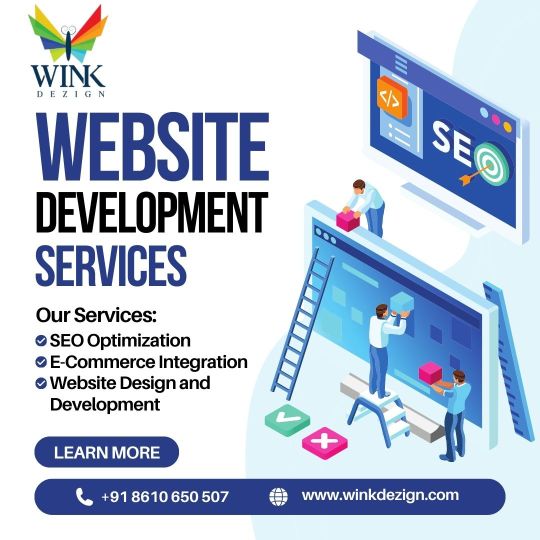
Why Choose Wink Dezign?
As the top web design company in Madurai, we blend creativity with technical expertise to craft websites that leave a lasting impact. Our team of skilled designers and developers understands the importance of a strong online presence, which is why we focus on delivering websites that not only look great but also provide a seamless user experience.
At Wink Dezign, our web design process begins by understanding your business, your goals, and your target audience. We believe that a website should reflect the core values of your brand and serve as a powerful marketing tool. Whether you’re a local business in Madurai or a global enterprise, we create custom web designs that drive engagement and conversions.
What Makes Us the Best Web Design Company in Madurai?
Custom Designs Tailored to Your Needs At Wink Dezign, we believe in crafting unique and personalized websites for every client. We don’t use one-size-fits-all templates. Our designers collaborate closely with you to understand your vision, ensuring the final design reflects your brand’s identity and meets your specific business objectives.
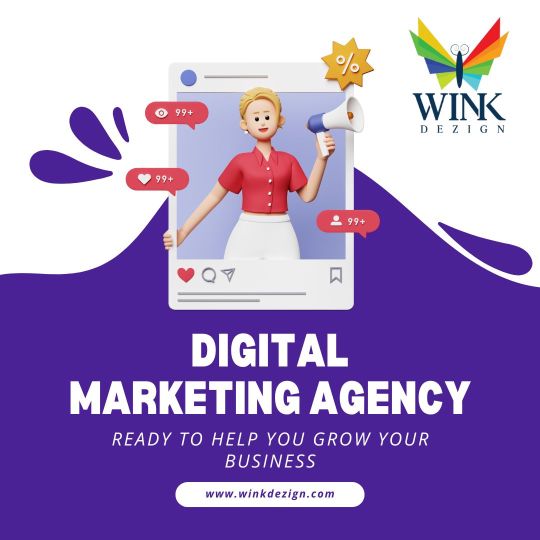
Mobile-Responsive Designs With more people browsing on smartphones and tablets, having a mobile-responsive website is essential. We ensure that your website is optimized for all devices, offering a flawless browsing experience across desktops, tablets, and mobile phones. This mobile-first approach is one reason why we are considered the top web design company in Madurai.
SEO-Friendly Websites We don’t just focus on aesthetics; we design websites with SEO in mind. By incorporating best practices in search engine optimization from the very beginning, we help your website rank higher on search engines like Google, driving more organic traffic to your site. This ensures your business reaches a wider audience and attracts potential customers.
Fast-Loading, High-Performance Sites A slow-loading website can frustrate visitors and lead to higher bounce rates. Our web design team ensures your site is fast, responsive, and performs optimally. With Wink Dezign, you can be sure your website will load quickly and function smoothly, providing a superior user experience.
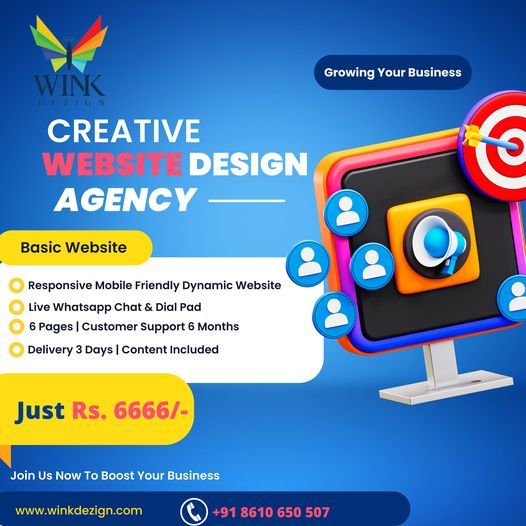
E-Commerce Website Expertise Are you looking to build an online store? As the top web design company in Madurai, we specialize in designing and developing e-commerce websites that are user-friendly, secure, and easy to manage. From product catalogs to secure payment gateways, we provide end-to-end e-commerce solutions to grow your business online.
Our Comprehensive Web Design Services
At Wink Dezign, we offer a wide range of web design services to meet all your digital needs, including:
Custom Web Design Bespoke designs tailored to your brand’s identity and goals.
Responsive Web Design Ensuring your website works seamlessly on all devices.
UI/UX Design Creating intuitive and engaging user experiences.
E-Commerce Web Design Building secure and scalable online stores.
Website Redesign Refreshing outdated websites to align with current trends.
Why Madurai Chooses Wink Dezign
Madurai is a city rich in culture and tradition, and businesses here deserve a website that reflects that vibrancy. At Wink Dezign, we understand the local market, and our team is committed to helping Madurai-based businesses enhance their digital presence.
Whether you're starting a new venture or looking to revamp your existing website, Wink Dezign is your go-to partner. As the top web design company in Madurai, we deliver creative, effective, and result-oriented web solutions that set you apart from the competition.
Get in Touch with Wink Dezign
Are you ready to take your online presence to the next level? Contact Wink Dezign, the top web design company in Madurai, and let us help you create a stunning website that drives results.
#webdesign#digital marketing agency#web development company#web design agency#web development services#web design company#website development company#website design company#top digital marketing agency
3 notes
·
View notes
Text
The Best Digital Marketing Course in Agra

Pingmedia stands out as one of the leading providers of Digital Marketing Course in Agra. Renowned for its comprehensive and practical approach, Ping media Digital Marketing Course is designed to equip students, professionals, and business owners with the skills and knowledge necessary to excel in the dynamic field of digital marketing.
Course Overview
Pingmedia’s Digital Marketing Course is meticulously crafted to cover a wide range of topics essential for mastering digital marketing. The course is structured to provide both theoretical knowledge and practical experience, ensuring that students are well-prepared to tackle real-world challenges.
Key Features:
Comprehensive Curriculum: The course covers all crucial aspects of digital marketing, including SEO, SEM, SMM, content marketing, email marketing, and more.
Practical Training: Emphasis on hands-on learning through live projects and real-world scenarios.
Experienced Trainers: Learn from industry experts with extensive experience in digital marketing.
Flexible Learning Options: Available in both online and offline formats to cater to diverse needs.
Certification: Industry-recognized certification upon successful completion of the course.
Detailed Course Modules
Introduction to Digital Marketing
Overview of digital marketing and its importance
Key digital marketing channels and strategies
Understanding digital marketing metrics and KPIs
Search Engine Optimization (SEO)
On-page and off-page SEO techniques
Keyword research and implementation
Technical SEO and website optimization
Tools for SEO analysis and tracking
Search Engine Marketing (SEM)
Introduction to Google Ads and PPC campaigns
Creating effective ad copy and landing pages
Budget management and bid strategies
Analyzing and optimizing campaign performance
Social Media Marketing (SMM)
Developing strategies for various social media platforms (Facebook, Instagram, Twitter, LinkedIn)
Content creation and curation
Social media advertising and analytics
Community management and engagement
Content Marketing
Crafting high-quality content for blogs, websites, and social media
Content planning and strategy
Techniques for content distribution and promotion
Measuring content effectiveness and ROI
Email Marketing
Building and managing email lists
Designing effective email campaigns and newsletters
Automation and personalization strategies
Analyzing email marketing metrics
Affiliate Marketing
Understanding affiliate marketing models and networks
Setting up and managing affiliate programs
Performance tracking and optimization
Best practices for working with affiliates
E-Commerce Marketing
Strategies for promoting online stores and products
Utilizing e-commerce platforms and tools
Product listing optimization and customer reviews
Handling promotions and sales campaigns
Mobile Marketing
Mobile marketing trends and strategies
App marketing and mobile advertising
SMS marketing and push notifications
Analyzing mobile marketing performance
Analytics and Reporting
Introduction to Google Analytics and other analytics tools
Tracking and interpreting website traffic and user behavior
Creating and presenting comprehensive reports
Using data to drive marketing decisions
Online Reputation Management (ORM)
Monitoring and managing online reputation
Strategies for handling negative feedback and reviews
Building and maintaining a positive online image
Web Design and Development Basics
Understanding the importance of a well-designed website
Basics of HTML, CSS, and WordPress
UX/UI design principles
Ensuring website speed and mobile responsiveness
Why Choose Pingmedia?
Expert Trainers: Pingmedia’s course is led by industry professionals with extensive experience and expertise in digital marketing. Their real-world insights and practical knowledge provide a valuable learning experience.
Practical Learning: The course includes hands-on training with live projects, allowing students to apply their knowledge in real-world scenarios. This practical experience is crucial for building confidence and competence.
Flexibility: With options for both online and offline learning, Pingmedia accommodates different learning preferences and schedules, making it easier for students to balance their education with other commitments.
Career Support: Pingmedia provides robust career support, including resume building, interview preparation, and job placement assistance. The institute’s strong industry connections also facilitate internship and job placement opportunities.
Certification: The course culminates in an industry-recognized certification, which enhances employability and demonstrates proficiency in digital marketing.
Up-to-Date Curriculum: The curriculum is regularly updated to reflect the latest trends and changes in the digital marketing landscape, ensuring that students learn the most current and relevant practices.
Target Audience
Students: Ideal for recent graduates or those pursuing degrees who want to start a career in digital marketing.
Professionals: Suitable for marketing professionals seeking to enhance their digital marketing skills and stay updated with industry trends.
Business Owners: Perfect for entrepreneurs looking to boost their online presence and drive business growth.
Freelancers: Great for individuals wanting to offer digital marketing services to clients.
Conclusion
Ping media Digital Marketing Course in Agra is a premier choice for anyone looking to build or advance their career in digital marketing. With its comprehensive curriculum, practical training, and expert instruction, the course equips students with the skills and knowledge needed to succeed in the competitive digital landscape. Whether you’re just starting out or looking to upgrade your skills, Pingmedia provides a valuable educational experience that can help you achieve your goals.
2 notes
·
View notes
Text
What’s new in React?
React is a continuously evolving library in the ever-changing web development landscape. As you embark on your journey to learn and master React, it’s important to understand the evolution of the library and its updates over time.
One of the advantages of React is that its core API has remained relatively stable in recent years. This provides a sense of continuity and allows developers to leverage their knowledge from previous versions. The conceptual foundation of React has remained intact, meaning that the skills acquired three or five years ago can still be applied today. Let’s take a step back and trace the history of React from its early versions to the recent ones. From React 0.x to React 18, numerous pivotal changes and enhancements have been made as follows: 1. React 0.14: In this version, the introduction of functional components allowed developers to utilize functions as components, simplifying the creation of basic UI elements. At that time, no one knew that now we would write only functional components and almost completely abandon class-based components.
2. React 15: With a new versioning scheme, the next update of React 15 brought a complete overhaul of the internal architecture, resulting in improved performance and stability.
3. React 16: This version, however, stands as one of the most notable releases in React’s history. It introduced hooks,a revolutionary concept that enables developers to use state and other React features without the need for class components. Hooks make code simpler and more readable, transforming the way developers write components.Additionally, React 16 introduced Fiber, a new reconciliation mechanism that significantly improved performance, especially when dealing with animations and complex UI structures.
4. React 17: This version focused on updating and maintaining compatibility with previous versions. It introduced a new JSX transform system.
5. React 18: This is the latest stable release, which continues the trajectory of improvement and emphasizes performance enhancements and additional features, such as the automatic batching of renders, state transitions, server components, and streaming server-side rendering.
Setting up a new React project There are several ways to create a React project when you are getting started. In this section, let's explore three common approaches: • Using web bundlers • Using frameworks • Using an online code editor
Using web bundlers Using a web bundler is an efficient way to create React projects, especially if you are building a Single-Page Application (SPA). Vite is known for its remarkable speed and ease of setup and use.
Using frameworks For real-world and commercial projects, it is recommended to use frameworks built on top of React. These frameworks provide additional features out of the box, such as routing and asset management (images, SVG files, fonts, etc.). They also guide you in organizing your project structure effectively, as frameworks often enforce specific file organization rules. Some popular React frameworks include Next.js, Gatsby, and Remix.
Online code editors Online code editors combine the advantages of web bundlers and frameworks but allow you to set up your React development environment in the cloud or right inside of the browser. This eliminates the need to install anything on your machine and lets you write and explore React code directly in your browser. While there are various online code editors available, some of the most popular options include CodeSandbox, StackBlitz, and Replit. These platforms provide a user-friendly interface and allow you to create, share, and collaborate on React projects without any local setup.To get started with an online code editor, you don’t even need an account. Simply follow this link on your browser:(https://codesandbox.io/p/sandbox/react-new?utm_source=dotnew). In a few seconds, you will see that CodeSandbox is ready to work with a template project, and a live preview of the editor is available directly in the browser tab. If you want to save your changes, then you need to create an account.Using online code editors is a convenient way to learn and experiment with React, especially if you prefer a browser-based development environment.
Reference material: React and React Native

2 notes
·
View notes
Text
20 Best Android Development Practices in 2023
Introduction:
In today's competitive market, creating high-quality Android applications requires adherence to best development practices. Android app development agencies in Vadodara (Gujarat, India) like Nivida Web Solutions Pvt. Ltd., play a crucial role in delivering exceptional applications. This article presents the 20 best Android development practices to follow in 2023, ensuring the success of your app development projects.
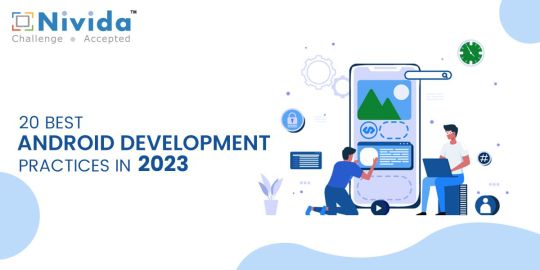
1. Define Clear Objectives:
Begin by defining clear objectives for your Android app development project. Identify the target audience, the app's purpose, and the specific goals you aim to achieve. This clarity will guide the development process and result in a more focused and effective application.
2. Embrace the Material Design Guidelines:
Google's Material Design guidelines provide a comprehensive set of principles and guidelines for designing visually appealing and intuitive Android applications. Adhering to these guidelines ensures consistency, enhances usability, and delivers an optimal user experience.
3. Optimize App Performance:
Performance optimization is crucial for user satisfaction. Focus on optimizing app loading times, minimizing network requests, and implementing efficient caching mechanisms. Profiling tools like Android Profiler can help identify performance bottlenecks and improve overall app responsiveness.
4. Follow a Modular Approach:
Adopting a modular approach allows for easier maintenance, scalability, and code reusability. Breaking down your app into smaller, manageable modules promotes faster development, reduces dependencies, and enhances collaboration among developers.
5. Implement Responsive UI Designs:
Designing a responsive user interface (UI) ensures that your app adapts seamlessly to various screen sizes and orientations. Utilize Android’s resources, such as ConstraintLayout, to create dynamic and adaptive UIs that provide a consistent experience across different devices.
6. Prioritize Security:
Android app security is of paramount importance. Employ secure coding practices, authenticate user inputs, encrypt sensitive data, and regularly update libraries and dependencies to protect your app against vulnerabilities and potential attacks.
7. Opt for Kotlin as the Preferred Language:
Kotlin has gained immense popularity among Android developers due to its conciseness, null safety, and enhanced interoperability with existing Java code. Embrace Kotlin as the primary programming language for your Android app development projects to leverage its modern features and developer-friendly syntax.
8. Conduct Thorough Testing:
Testing is crucial to ensure the reliability and stability of your Android applications. Employ a combination of unit testing, integration testing, and automated UI testing using frameworks like Espresso to catch bugs early and deliver a robust app to your users.
9. Optimize Battery Consumption:
Battery life is a significant concern for Android users. Optimize your app's battery consumption by minimizing background processes, reducing network requests, and implementing efficient power management techniques. Android's Battery Optimization APIs can help streamline power usage.
10. Implement Continuous Integration and Delivery (CI/CD):
Adopting CI/CD practices facilitates frequent code integration, automated testing, and seamless deployment. Tools like Jenkins and Bitrise enable developers to automate build processes, run tests, and deploy app updates efficiently, resulting in faster time-to-market and improved quality.
11. Leverage Cloud Technologies:
Integrating cloud technologies, such as cloud storage and backend services, can enhance your app's scalability, performance, and reliability. Services like Firebase offer powerful tools for authentication, database management, push notifications, and analytics.
12. Ensure Accessibility:
Make your Android app accessible to users with disabilities by adhering to accessibility guidelines. Provide alternative text for images, support screen readers, and use colour contrast appropriately to ensure inclusivity and a positive user experience for all users.
13. Optimize App Size:
Large app sizes can deter users from downloading and installing your application. Optimize your app's size by eliminating unused resources, compressing images, and utilizing Android App Bundles to deliver optimized APKs based on device configurations.
14. Implement Offline Support:
Provide offline capabilities in your app to ensure users can access essential features and content even when offline. Implement local caching, synchronize data in the background, and notify users of limited or no connectivity to deliver a seamless user experience.
15. Implement Analytics and Crash Reporting:
Integrate analytics and crash reporting tools, such as Google Analytics and Firebase Crashlytics, to gain insights into user behaviour, identify areas for improvement, and address crashes promptly. This data-driven approach helps in refining your app's performance and user engagement.
16. Keep Up with Android OS Updates:
Stay up to date with the latest Android OS updates, new APIs, and platform features. Regularly update your app to leverage new functionalities, enhance performance, and ensure compatibility with newer devices.
17. Provide Localized Versions:
Cater to a global audience by providing localized versions of your app. Translate your app's content, user interface, and notifications into different languages to expand your user base and increase user engagement.
18. Ensure App Store Optimization (ASO):
Optimize your app's visibility and discoverability in the Google Play Store by utilizing appropriate keywords, engaging app descriptions, compelling screenshots, and positive user reviews. ASO techniques can significantly impact your app's download and conversion rates.
19. Follow Privacy Regulations and Guidelines:
Adhere to privacy regulations, such as GDPR and CCPA, and ensure transparent data handling practices within your app. Obtain user consent for data collection, storage, and usage, and provide clear privacy policies to establish trust with your users.
20. Regularly Update and Maintain Your App:
Continuously monitor user feedback, track app performance metrics, and release regular updates to address bugs, introduce new features, and enhance user experience. Regular maintenance ensures that your app remains relevant, competitive, and secure.
Conclusion:
Adopting these 20 best Android development practices in 2023 will help Android app development companies in India, create exceptional applications. By focusing on objectives, embracing Material Design, optimizing performance, and following modern development approaches, your Android apps will stand out in the market, delight users, and achieve long-term success. Also by partnering with an Android App Development Company in India (Gujarat, Vadodara) you can leverage their expertise.
#Android App development company in India#Android App development agencies in India#Android App development companies in India#Android App development company in Gujarat#Android App development company in Vadodara#Android App development agencies in Vadodara#Android App development agencies in Gujarat#Android App development companies in Vadodara#Android App development companies in Gujarat
7 notes
·
View notes
Text
Unleashing Creativity: Teaching Web Development Basics
Gaining a foundational understanding of web development is becoming just as important for students as traditional education in this age of digital innovation. Students’ creativity is stimulated and they are prepared for a world in which having an online presence is crucial by being introduced to HTML, CSS, and fundamental web design concepts.

Here are some methods teachers can use:
Project-Based Learning: Plan experiential learning opportunities that walk students through building a simple website. Introduce CSS for styling gradually after starting with basic HTML structures.
Platform: Use online platforms like CodePen, Glitch, or Repl.it to provide a real-time coding environment. These platforms allow students to see instant visual results as they code.
Interactive Tutorials: Introduce interactive tutorials that guide students through the basics of HTML and CSS. Platforms like Codecademy or freeCodeCamp offer step-by-step lessons with immediate feedback.
Platform: Codecademy, freeCodeCamp, and Khan Academy are excellent platforms for interactive tutorials, allowing students to learn at their own pace.
Collaborative Coding: Encourage your students to collaborate on projects during collaborative coding sessions. This encourages collaboration and facilitates peer learning among students.
Platform: Utilize version control systems like GitHub, GitLab, or Bitbucket. These platforms enable students to collaborate on code, manage versions, and receive feedback from peers and teachers.
Web Development Bootcamps: Introduce mini “BOOTCAMP” sessions where students immerse themselves in intensive, focused learning for a short period. Cover key HTML and CSS concepts during these sessions.
Platform: Platforms like Udacity, Coursera, or edX offer short-term courses and bootcamps on web development that can be adapted for classroom use.
Showcasing Web Design Principles: Teach not just the coding but also the principles of good web design. Discuss topics like user experience (UX) and user interface (UI) design.

Throughout your classes, provide fascinating information about web development. For example, did you know that the very first website ever made is still up and running? Being able to share these trivia not only makes learning more enjoyable but also piques students’ interests.
For kids, adding a foundational understanding of web programming to upper-grade courses opens up a world of opportunities. Makers’ Muse Ed-Tech provides the materials and tools required to make learning successful and interesting. Teachers may spark students’ interest in technology and equip them to become the next generation of digital landscape creators by teaching HTML, CSS, and fundamental web design principles. Together with Makers’ Muse, let’s educators take our students on this fascinating adventure that will cultivate their creativity and provide them with the tools they need to succeed in the rapidly changing field of web development.
#html#css#web development#web design#web developers#artificial intelligence#coding#education#coding for kids#future#innovation#tech#coding course#programming#digital world#tumbler#tumblog
2 notes
·
View notes
Text
How Does Web Development Explore A Small Business?

In this business world, each and every business is showing value to the economy, this is true for the small business. The businesses who have established their online presence are seeking to establish their business identity and consumer attention is becoming an increased competition in this online. So that is what we can expect from a web development company in chennai.
To maintain a business success, it is vital to keep the business on the top of the technology.
With the support of the web development look into the list of benefits and improve the business growth.
Chatbot For Quicker Communications:
For a business two necessities are automation and convenience, who are looking to streamline their marketing and customer service. Easy optimization of websites, build a chatbot in your website development and this will act as a primary driver of user experience improving.
As a small business owner, don’t worry about the online support tools. These tools are not meant for large scale business and not so costly.
Business people include the chatbot options to engage with the customers because 21% of the users are expecting the same.Customer engagement and satisfaction from the leading web development service to answer the queries spontaneously.
24/7 customer support with this automated technology, assuring them the information they are looking for will be always on the fingertips.
Huge Leads Generated Through The Artificial Intelligence:
The way websites are developed has been revolutionizing by artificial intelligence. Vast amounts of data can be processed on the target audience. Professional service is expected from a small business using the web development company to take place the desired actionable insights and also allow them with required web development activities for conversion optimization.
Website will never be a business brochure by investing in AI inside the development of a website. Always stay ahead of the competitors, so that you can able to develop a website for your customer.
AI has started evolving the unexpected areas that are HR(human resource). Not only is the hiring and onboarding process streamlined, but also collects feedback from the new employee about the performance of the HR. That is why AI is treated as a valuable tool for the business by web design companies.
What your competitors do, AI will keep tabs on everything. The data will be gathered and distilled for easy reading.
Motion UI Will Make Your Web Development More Interactive:
If a website is developed by a business owner how do they attract more customers? Thanks to technological development, more web development services are available to make your site a wider group of audience.
Animation and transition will be created by the motion user interface, which catches the user's attention and overall user experience will be enriched.
Differentiate your website design with an elegant interface using the minimalistic design. Proper implementation will impact on the rate of conversions.
Your website stands unique using the motion UI but also enhances the user engagement and improves site usage which is more important for the growing business.
Develop Site With Responsive Mobile Friendly:
In an era dominated by smartphones, it is imperative for businesses, especially startups, to prioritize responsive and mobile-friendly web development. The surge in smartphone users underscores the importance of ensuring that websites perform seamlessly on mobile devices. Google, too, rewards mobile-friendly attributes in its ranking algorithm. Therefore, investing in a responsive website is not just beneficial but essential. Collaborating with a leading web development service in Chennai is key to guaranteeing a consistent user experience across both desktop and smartphone platforms.
Smartphone is a platform where 56% of the queries are generated in search engines by using the site optimization for the device like mobile.
As a small business owner, capturing a broader audience necessitates making your website responsive to the diverse range of devices consumers use.
Given that a significant portion of searches is conducted on mobile devices, investing in a mobile-first website or adopting a mobile-friendly design is crucial.
In 2020, the spotlight is on mobile-first responsive web development as businesses strive to stay ahead in this dynamic digital landscape.
Enhance The Demand Of Voice Search:
As people increasingly live life on the move, smartphones have empowered us to search and get answers conveniently, anytime, anywhere. This surge in on-the-go lifestyles has elevated the demand for voice search optimization. If your business strategy hasn't yet embraced voice search, 2020 is the year it becomes a necessity, and partnering with a top
web development company in Chennai is the key to staying ahead in this evolving landscape
For a local business google my business is most essential.Connect with your business by listening to know the business opening hours, address and phone number.
All these can be answered in voice queries that gather more offline leads. Half the smart device is hearing the user queries and executing the commands based on that voice.
As people know, optimizing for voice search will lead to rank in search engines that will take more qualified traffic to sites.
Conclusion:
There are abundant benefits from a small business,but so many difficulties in developing and establishing the message. Digital innovation year is going to be 2020 and new ways are expected from a business to capture the attention of the audience.
Include some new innovative development trends to business strategies and focus on the user experience for business. Continuously satisfy your customer and convert new ones
Kindly reach us for website design /Contact Us +91 9677876445
#best web design agency#web design company#top web design companies#seo#web design company in chennai#ecommerce-website-developer-in-chennai#web designer near me
2 notes
·
View notes
Text
Predicting and programming: enemies for life (part 2)
Day 42 - Dec 17th, 12.023
This is the direct continuation of yesterday's post. I hope that I'm able to continue my daily journals as usual, but there's a strong possibility that one day or another I will not able to post, or need to post after midnight. Also, the entries probably will be shorter or just small updates sometimes even on weekends, but I will try to write them on the morning to be able to have time and brain to do something bigger and with better quality. And some posts I could even need to split into two if I need to stop writing one in the middle, like what's happened yesterday. There's no need to go into details, I don't want to expose my personal life nor of the people around me, I just want to inform that this end of year is not being great to my partner, so I want to be with her as much as I can to help and support her to whatever she needs to.
"A ghostly server"
Like I said in the last part, the application was complaining about not having a server, and the stranger, it was complaining about not having the development server running. This as a production build of the application, the embedded web-app were a static one, a static HTML file, why was it complaining about the server!? I tried searching around the Tauri's GitHub issues, but there was nothing about it, and creating an issue wasn't in my mind at the time because again, I am short in time and couldn't wait for a fix.
So because Tauri wasn't working, and I didn't even want to think about how to fix this problem, I switched back to CapacitorJS. This process was somewhat easy, because both of them are a "wrapper", so I just needed to move the web app part of the application from a template to another, but it was somewhat time-consuming (I'm not so accustomed to Vim and my new file explorer, so navigating was somewhat slower, and like every JavaScript project, just setting it up a template can be time-consuming). But after setting it up, Capacitor compiled, and the app was working as normal without any differences.
Framework hopping
While that was happening, when I started the project, I also wasted a lot of time choosing what framework to use. "Why?" One, JavaScript is an ecosystem that in general can be somewhat overwhelming with choices; Two, I already used SvelteKit for my last application and projects, so this time I wanted something different; Three, I wanted to try something more "native-like".
Web as Native
I started trying to use Framework7, because it has a collection of components and routing that emulates the native-app experience, and most important to me, it had the updated Material Design 3 (Material You) design; with Svelte, my primary UI framework of choice. But it didn't work that well. The routing wasn't how I liked it to be, and Framework7 is a somewhat old framework as it seems (it uses Gulp as its build system and the last commits were a month ago, the project is not that active), it stills a great project, but somewhat difficult to integrate with newer thing like Svelte 4 and Vite. After not being able to, I tried to KonstaUI with Svelte, but ended up with the same results. If you know something about this area of trying to make web apps feel like a native app, you are probably thinking something like "why you didn't use Ionic?", and the main reason is that it stills uses Material Design 2, and personally I like more how the newer version looks. Also, Ionic doesn't have official support for Svelte, and even knowing that the community package is good, I already used it in the past and wanted something new to try.
So, after probably hours, if not a day, trying that, I hopped into another idea. I found something called Beer CSS, a library that creates a Material You look and app using just CSS pretty much, so I could use any framework that I liked! Nonetheless, because it was pure JS and CSS, I thought it would be good to use Astro, so I could also take advantage of its new View Transitions feature, and could use Svelte still for the interactivity blocks. But as you can already tell if you know Astro, it's probably not the best idea to use a static site generator (SSG) as a mobile application framework, however it was working, and I was being able to create something and actually develop the application part of things and not just continue setting up new projects.
Lack of documentation
But then some cracks started to open. Beer CSS's documentation is not the greatest for me, it's mostly code examples and there's pretty much no words about customization and how the CSS words and/or how to manipulate it, and it seems that you really need to follow Material's system and hierarchy to it to work properly. I don't have time for this, and I already wasted 2 to 3 days fighting my way around all of this.
Also, while this was happening, the problem with Tauri also happened, which for some reason also made me switch from Astro to SvelteKit. Why? I don't know really, for me the problem with the server could be related to it, but of course it didn't work, and I had to switch to Capacitor like I said.
Blank screen and broken dreams
And then, another problem appeared out of nowhere, the built app with CapacitorJS started to have a total black screen when I opened it. There were no errors in the console, warnings on the screen, nothing, the app simply stopped working, and I couldn't find anything about it on the issues, and being honest, at this point I had already wasted around a week and couldn't handle it anymore. The idea of not being able to give at least something in time was storming my mind and I ended up wasting another day procrastinating, because I couldn't handle and think of solutions.
I had so many ideas for this app and now everything stopped working, I was exhausted, this was supposed to be something special for my girlfriend, and I don't want to lose the date again, even more now when she's passing difficult times in her life. I need to do and try something.
Compromises
This is where I am right now. I have less than a week to finish this project, and the app itself is way unfinished than I anticipated it would be days ago. So, what we do when this happens? Compromises, I already had in mind that I would create just some features until the date and then update over time, but now it will be just one feature and as an online website for now.
One of the features of this app is an interactive messaging page, to give complements and things like that, but for now I will try to repurpose it to some predefined messages and just express out of my heart to her using it. Do I want to be simple as that? No, but it only what I can do for now, and hopefully I will be able to add more things as time passes, I really want to do something special and specific for my girlfriend. Thankfully, porting it to a native app in the future won't be so hard, and I already have some ideas now on how to fix the past bugs that impossibilitaded me from porting it, however I will try to focus more on the features themselves for now.
Knowing my girlfriend, she will understand, but again, it's more of me to her thing in my mind.
---
Today's artists & creative things
Song: Hello, World - by Louie Zong I don't know why, writing this post just remembered me this music.
---
Copyright (c) 2023-present Gustavo "Guz" L. de Mello <[email protected]>
This work is licensed under the Creative Commons Attribution-ShareAlike 4.0 International (CC BY-SA 4.0) License
2 notes
·
View notes